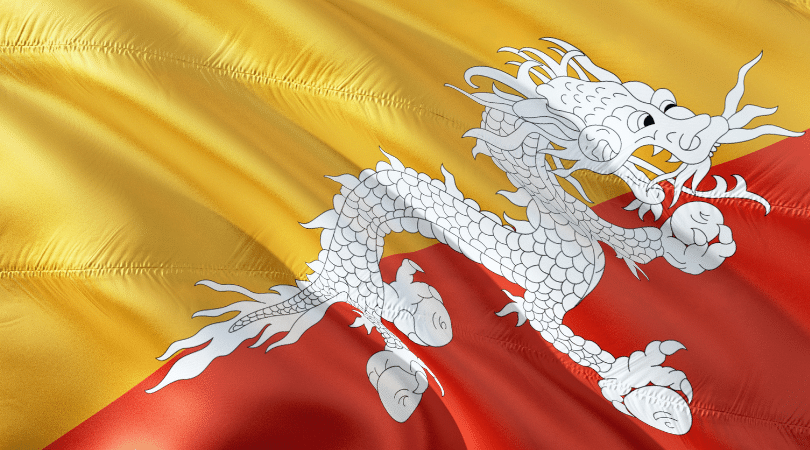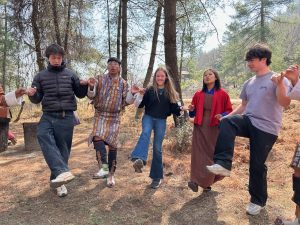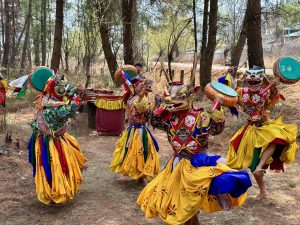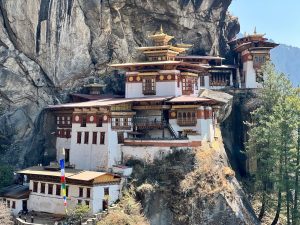A brief history into the flag and Bhutan’s name

Tibetan immigrants settled in Bhutan sometime in the tenth century. In the eighth century, an Indian saint brought Buddhism to the area. In 1616 a Tibetan lama set about unifying the valleys that were originally reigned by their own kings and changed to one central authority. The lama then gave the country the name Druk Yul, meaning the land of the Thunder Dragon. Bhutan, the name we now refer to this country, was derived from Bhotanta, meaning the “end of Tibet” or from the Sanskrit Bhu-uttan, meaning, “highlands.”
The flag: The Yellow triangle represents the Kabney (silk scarf worn with the traditional Bhutanese male dress, the Gho), the administration, and the government. The orange triangle represents Buddhist traditions. The dragon is white to signify purity and the jewels the dragon is grasping represent the wealth and security within the country.
Bhutan’s Gross National Happiness – What is it?
In the late 1970’s, the fourth King of Bhutan introduced the concept of Gross National Happiness to the country and the government.
It is often recommended as a new approach to assessing economic and social development and Bhutan in particular has been known throughout the world as using this to measure their quality of life. It is a concept that many countries, since the inception of this idea, have taken an interest in. Canada in particular has invested time and money into the project, contributing 1.2 million dollars towards the research particularly focusing on the indigenous communities.
There are 4 pillars in the GNH and each is measured through a census survey focussing on the 9 domains. The 4 pillars include: good governance, preservation and promotion of culture, environmental conservation and sustainable socio-economic development. The 9 domains of GNH are: culture, time use, good governance, community vitality, living standards, health, education, environment and psychological well-being.
This idea is not to measure whether the individual is happier than you or I, but to measure societal happiness and how to ensure each of the communities/regions are receiving the support they need from the country and government. The survey helps the government allocate appropriate resources to certain regions or communities in Bhutan. For instance, if people report their living standards to be of concern or their psychological well-being marked as low, then the government would find ways to support the people of these regions/communities.




